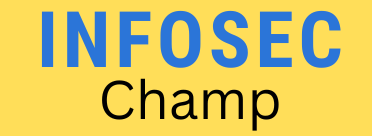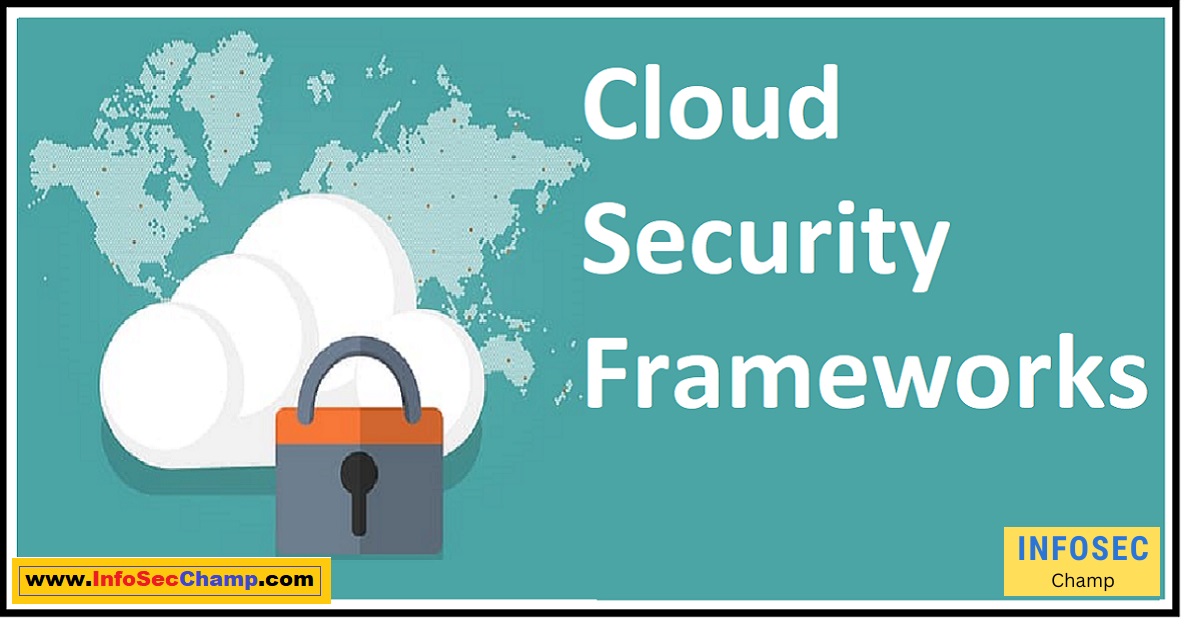A company can secure its cloud-based apps, systems, and data by following a set of standards, rules, and best practices known as cloud security frameworks. Organizations can use cloud security frameworks to protect sensitive data, identify and mitigate potential security threats, and adhere to legal and regulatory requirements.
There are numerous cloud security frameworks available, including:
- The Cloud Security Alliance (CSA) Security, Trust & Assurance Registry (STAR): This framework offers a thorough set of controls and best practices for safeguarding cloud-based settings.
- The National Institute of Standards and Technology (NIST) Cybersecurity Framework: This framework offers a flexible, risk-based approach to cybersecurity that can be customized to the requirements of various companies.
- The Center for Internet Security (CIS) Critical Security Controls: Organizations can use the prioritized list of security rules provided by this framework to safeguard their systems and data.
Organizations should adhere to best practices like these in order to secure data protection when deploying cloud security frameworks:
- Implementing strong access controls: Only authorized users and devices should be able to access cloud-based services, and multifactor authentication should be utilized to confirm user identities.
- Encrypting data: To prevent unwanted access, sensitive data should be encrypted both at rest and in transit.
- Regularly monitoring and auditing cloud-based systems: Companies should keep an eye on their data and systems in the cloud to look for any potential security holes and act quickly if they occur.
- Maintaining compliance with relevant regulations: Companies should make sure that their cloud-based systems and data meet pertinent legal standards, such as the General Data Protection Regulation (GDPR) and the Health Insurance Portability and Accountability Act (HIPAA).
In sum, cloud security frameworks offer a list of recommendations and best practices for safeguarding cloud-based applications and data. Organizations can ensure data protection in their cloud-based environments by implementing best practices like conducting a risk assessment, implementing strong access controls, encrypting data, regularly monitoring and auditing cloud-based systems, and maintaining compliance with pertinent regulations.
How can organizations establish a security baseline for cloud security frameworks to ensure regulatory compliance?
For the past ten years, cloud computing has been the rage in the computer sector because it allows companies to extend their operations while paying less for infrastructure. Data breaches, data loss, and unauthorized access are some of the emerging security issues that must be handled. Organizations must create a security baseline for cloud security frameworks in order to guarantee regulatory compliance. To create a security baseline for cloud security frameworks, try one of the following methods:
- Identify regulatory requirements: Companies should identify regulatory standards that pertain to their organization, such as HIPAA, GDPR, or PCI DSS, and incorporate those requirements into their security baseline.
- Assess the risks: To develop a security baseline for cloud security frameworks, it is essential to assess the threats. Companies should undertake a risk assessment to identify potential risks and weaknesses in their cloud environment.
- Choose a security framework: Businesses should opt for a framework that is in line with their security objectives and legal constraints. NIST, ISO 27001, and CIS are the security frameworks that are most frequently utilized.
- Develop policies and procedures: Establishing policies and procedures is essential to creating a security baseline for cloud security frameworks. Access control, data protection, incident response, and other security measures should all be covered by policies and procedures.
- Implement security controls: Companies should apply security measures to reduce the risks found during the risk assessment. Access control, encryption, and monitoring are examples of security controls.
- Conduct regular audits: Companies should routinely assess their security baseline for cloud security frameworks to make sure it is being followed and is working as intended. Audits also aid in locating areas that require development.
To ensure regulatory compliance, creating a security baseline for cloud security frameworks is essential. Organizations can improve their cloud security posture and reduce the risk of data breaches and other security incidents by identifying regulatory requirements, assessing the risks, selecting a security framework, developing policies and procedures, implementing security controls, and conducting regular audits.
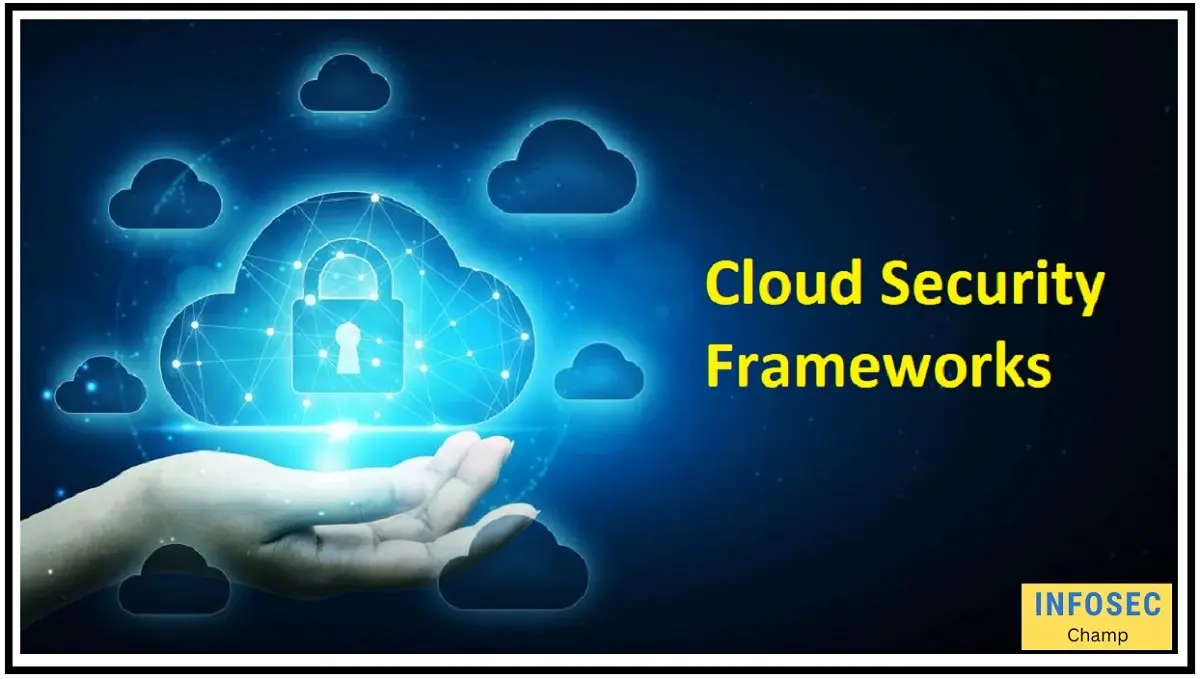
What are the most important security controls to prioritize when implementing cloud security frameworks?
Today’s company operations depend heavily on cloud computing. Data leaks, cyberattacks, and illegal access are just a few of the security concerns it poses. In order to protect corporate processes and data, a cloud security architecture must be implemented. So which security measures should be given top priority when developing cloud security frameworks?
- Data Protection: Data is the lifeblood of every organization, thus protecting it is essential to cloud security. As a result, you should place a high priority on data encryption, backup, and recovery techniques.
- Access Controls: One of the most important aspects of cloud security is restricting user access. Businesses must place a high priority on identity and access management as well as multi-factor authentication to guarantee that data is only accessible by authorized individuals.
- Network Security: It is essential to safeguard the cloud network from external threats.
- Compliance: Compliance is a key component of cloud security, particularly for companies that handle sensitive data. Prioritizing regulatory compliance can help businesses avoid costly fines and reputational harm from regulations like HIPAA, PCI DSS, and GDPR.
- Disaster Recovery: Having a disaster recovery plan in place is crucial in the event of a disaster or a security compromise. The effects of a security breach can be lessened by giving backup and recovery, continuity planning, and disaster response top priority.
- Outcome: When adopting cloud security frameworks, the most crucial security controls are data protection, access restrictions, network security, compliance, and disaster recovery. By putting these measures in place, businesses may successfully secure their data, lower the risk of unwanted access and data breaches, and continue to comply with regulations.
How can organizations ensure their cloud security frameworks are scalable and adaptable to future security threats?
To protect their data and sensitive information from cyber attacks, organizations making the journey to the cloud must prioritize security. Businesses need to put in place scalable and flexible cloud security frameworks that can respond to changing security threats because the cloud environment is continuously changing. Here are some strategies businesses may use to make sure their cloud security frameworks are expandable and flexible:
- Conduct a comprehensive security assessment: Before implementing any security framework, undertake a full security evaluation of the cloud environment to identify potential vulnerabilities and areas of weakness. Organizations can benefit from this assessment by better understanding the specific security requirements and the most effective method for securing the cloud environment.
- Implement a cloud security framework: Create a complete cloud security architecture that includes technical controls, rules, and procedures to protect the cloud environment.
- Continuously monitor the cloud environment: Keep an eye on the cloud environment at all times. In order to gain insights into the security posture of the cloud environment, organizations can adopt a monitoring tool that can spot anomalous activity, find vulnerabilities, and examine security logs.
- Regularly update security policies and procedures: Organizations must keep up with the latest security developments to protect themselves from potential dangers. To strengthen the overall security posture of the cloud environment, regular evaluations of the security architecture can assist identify gaps that need to be filled.
- Implement advanced security controls: Advanced security measures like encryption, multi-factor authentication, and network segmentation can help to improve the security of the cloud environment. These controls can be modified to fit the organization’s unique security needs and add another line of defense against potential security threats.
Organizations may protect their cloud environment from potential security threats by building a thorough cloud security framework that is scalable and adaptable. Organizations can remain resilient to future security risks by routinely reviewing and updating the security framework.
What are some common mistakes to avoid when implementing cloud security frameworks, and how can they be mitigated?
A set of rules and recommended practices are offered by cloud security frameworks to safeguard cloud systems. Yet, putting these frameworks into practice may be difficult, and businesses frequently make mistakes that put their security in danger. In this essay, we’ll go through some typical errors to avoid and mitigation strategies for building cloud security frameworks.
Lack of visibility and control
Lack of visibility and control is among the major errors businesses make when putting cloud security frameworks in place. Misconfigurations and illegal access to resources may result from this. Organizations should develop a centralized cloud security management platform that offers total visibility and control over cloud resources in order to reduce this risk.
Poor access management
For cloud settings to be secure, access management is essential. Companies frequently commit errors like giving users too many permissions or employing shoddy authentication techniques. Organizations should put in place a strict access management strategy that incorporates multi-factor authentication and regular access reviews in order to reduce this risk.
inadequate data protection
Cloud security depends on data protection. Companies frequently commit the error of either not encrypting critical data or employing subpar encryption techniques. Organizations should use robust encryption techniques for data in transit and at rest to reduce this risk.
Lack of regular audits and monitoring
To find security flaws and reduce risks, regular audits and monitoring are necessary. Companies frequently commit the error of failing to routinely audit or keep an eye on their cloud environments. Organizations should use regular audits and monitoring solutions that send alarms and notifications in real-time to reduce this risk.
In summation, rigorous preparation and execution are necessary when adopting cloud security frameworks. Companies must avoid typical errors including poor access management, inadequate data protection, lack of visibility and control, and irregular auditing and monitoring. Organizations may make sure that their cloud environments are safe and secure by adopting these actions.
What role do employee training and education play in ensuring the effectiveness of cloud security frameworks?
The efficiency of cloud security frameworks depends on the education and training of employees. Organizations must recognize the need of ensuring that their staff members are appropriately taught and informed on security measures linked to cloud services as cloud computing continues to expand.
The following are some of the functions that employee education and training play in ensuring that cloud security frameworks are effective:
- Increased awareness and understanding: A greater knowledge and understanding of the dangers involved with adopting cloud services can be achieved through employee training and education. It helps to increase awareness and encourages employees to adopt best practices for data protection, risk mitigation, and incident response.
- Better compliance: Organizations must comply with numerous security requirements and standards, and employee training is key in this regard. Cloud service companies offer compliance certifications such as SOC 2, HIPAA, PCI DSS, and ISO 27001. Organizations can improve compliance by training personnel on these requirements and how to follow them.
- Efficient incident response: Well-trained staff members can react more quickly and effectively to security breaches and other cybersecurity crises, reducing their effects. The term “ecosystem” refers to a group of people who operate in the construction industry.
- Effective risk management: Good risk management can be achieved by teaching employees to recognize and control the hazards related to the use of cloud services. Employee training on how to spot and report potential security concerns can help stop assaults and safeguard sensitive data.
- Improved security culture: A stronger security culture can be created inside an organization with the use of training and education. When employees are aware of the dangers and repercussions of security breaches, they are more committed to the safety of their company. This may result in stronger security frameworks and a more proactive approach to security measures.
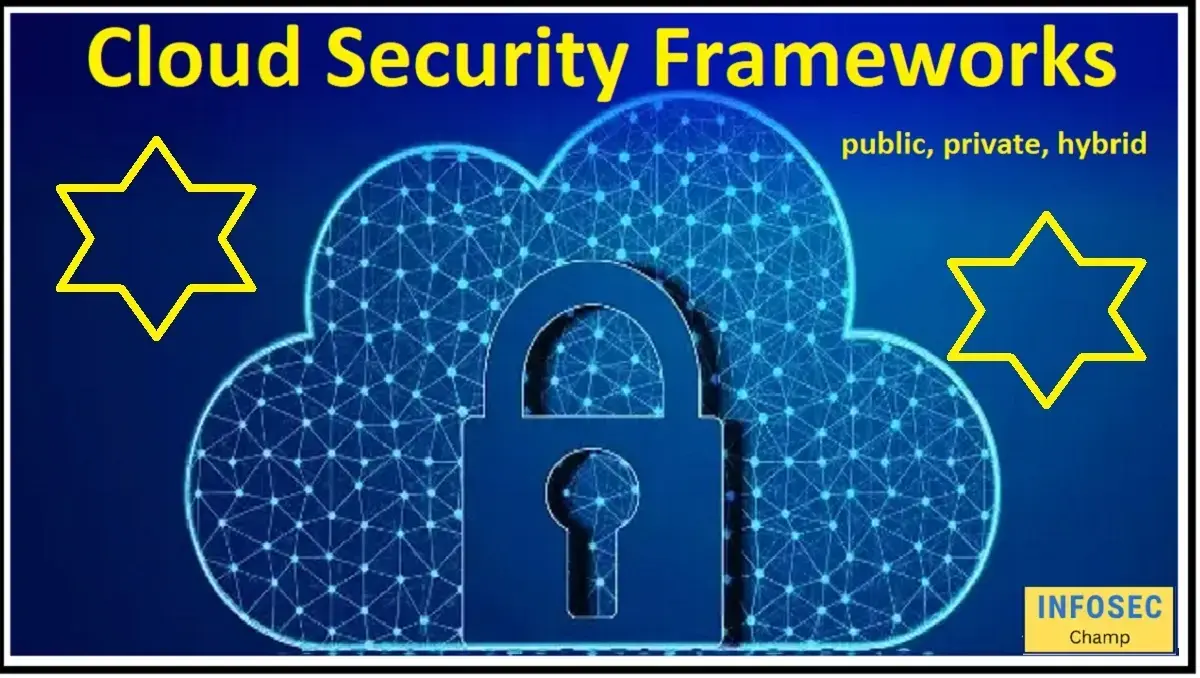
What are the differences between public, private, and hybrid cloud security frameworks, and how should organizations choose which one to implement?
Cloud computing has become increasingly popular among businesses in recent years, however because of this growth, businesses are finding it difficult to choose the right cloud security framework for their operations. Public, Private, and Hybrid are the three basic types of cloud security frameworks. We will compare public, private, and hybrid cloud security frameworks in this post and offer advice to businesses on which to use.
- Public Cloud Security Framework: Public cloud security is a multi-tenant environment that offers online access to shared resources. Public cloud services providers like Amazon Web Services (AWS), Microsoft Azure, and Google Cloud Platform offer a variety of security measures to protect their cloud infrastructure. The client is in charge of protecting their data, and the service provider is in charge of protecting the infrastructure.
- Private Cloud Security Framework: Private cloud security is a single-tenant system that gives users access to certain resources within an enterprise. Private cloud security frameworks are made to give businesses the most flexibility and control over their data and infrastructure. The organization is in charge of protecting its infrastructure and data, and it is free to modify the security controls to meet its needs.
- Hybrid Cloud Security Framework: An amalgamation of both public and private cloud security frameworks is a hybrid cloud security architecture. It enables businesses to take use of both public and private cloud advantages. Businesses can decide to use the public cloud for non-sensitive data and the private cloud for sensitive data.
- Choosing the Right Cloud Security Framework: Prior to selecting the best cloud security framework, organizations should take into account a number of aspects, including data sensitivity, compliance needs, and budget. The distinctions between public, private, and hybrid cloud security frameworks are outlined in the table below.
| Criteria | Public Cloud Security | Private Cloud Security | Hybrid Cloud Security |
| Data Sensitivity | Suitable for non-sensitive data | Suitable for sensitive data | Suitable for both sensitive and non-sensitive data |
| Compliance Requirements | May not meet all compliance requirements | Can meet most compliance requirements | Can meet all compliance requirements |
| Security Control | Limited control over security controls | Maximum control over security controls | Customizable security controls |
| Cost | Cost-effective for small organizations | Expensive for small organizations | Cost-effective for organizations with varying needs |
| Scalability | Highly scalable | Scalable within the limits of the organization | Scalable as per the organization’s needs |
What are the benefits and challenges of using third-party cloud security frameworks, and what should organizations consider before outsourcing their security?
Organizations can gain from using third-party cloud security frameworks in a variety of ways, including better productivity, lower costs, and access to professional security knowledge and resources. But, there are a number of difficulties to take into account as well, including a loss of control, potential compliance problems, and a greater reliance on third-party suppliers.
Benefits of using third-party cloud security frameworks:
- Expertise and resources: Third-party suppliers frequently have highly trained security personnel and cutting-edge security technologies, which can be expensive for businesses to build internally.
- Reduced costs: decreased costs Outsourcing security can lower the costs of employing and educating security personnel as well as purchasing and maintaining security equipment.
- Increased efficiency: By providing streamlined and automated security processes, third-party suppliers enable businesses to concentrate on their core operations.
Challenges of using third-party cloud security frameworks:
- Loss of control: When security is outsourced, some degree of control over security procedures and information is given up. Because of this, it could be challenging to adapt security precautions to meet certain organizational requirements.
- Compliance issues: Organizations may have compliance problems while outsourcing security since they must make sure that third-party suppliers abide by all applicable rules and regulations.
- Dependency on third-party providers: When an organization’s reliance on third parties for security grows, it’s critical to pick a provider that is dependable, trustworthy, and financially stable.
The term “ecosystem” refers to a group of people who operate in the construction industry.
Companies must identify their security criteria and confirm that the third-party provider can meet them.
- Provider selection: Businesses should do extensive research on potential providers and make sure they have a solid track record, the appropriate credentials, and a stable financial position.
- Contract terms: The term “ecosystem” refers to a group of people who operate in the construction industry.
- Compliance considerations: Businesses must make sure that the third-party supplier complies with all applicable laws and regulations and that there are processes in place for monitoring compliance.
In conclusion, While using third-party cloud security frameworks for security outsourcing might have a number of advantages, it’s crucial for businesses to thoroughly weigh the risks involved and take precautions before deciding.
How can organizations continuously monitor and evaluate the effectiveness of their cloud security frameworks?
Making sure that their cloud security frameworks are efficient becomes more crucial as more enterprises move their operations to the cloud. Constant monitoring and evaluation are essential elements in guaranteeing the effectiveness of your cloud security system. These are some actions businesses may take to keep an eye on and assess the performance of their cloud security frameworks:
- Establish key performance indicators (KPIs) and metrics: Establish precise KPIs and indicators to assess the efficiency of your cloud security architecture. Metrics including the number of security incidents, the amount of time it takes to identify and address events, and the efficiency of access controls may be included.
- Use automated tools: Deploy automated technologies that can continuously check your cloud infrastructure for security flaws and threats. You can swiftly identify and take care of security vulnerabilities with the help of these technologies, which can deliver real-time warnings and reports.
- Conduct regular security audits: Perform routine security audits to gauge the efficiency of your cloud security framework. Penetration testing, vulnerability assessments, and security reviews may all fall under this category.
- Train employees: Make sure your staff is trained on your cloud security rules and procedures. Human error-related security issues can be avoided with regular training.
- Stay up to date with industry best practices: Keep up with the most recent cloud security best practices and new threats. This can assist you in identifying possible weaknesses and taking preventative measures to remedy them.
By putting these measures in place, businesses can regularly assess and monitor the performance of their cloud security frameworks, assuring the protection of their data and systems.
What are the emerging trends and technologies in cloud security frameworks, and how can organizations prepare for them?
In many firms, cloud computing has recently taken over as the norm for storing and processing data. But as cloud services are used more frequently, it has also become clear that improved cloud security protocols are required. Here are a few new developments in cloud security frameworks and how businesses should get ready for them.
- Multi-cloud security: The term “ecosystem” refers to a group of people who operate in the construction industry.
- Zero-trust security: Zero-trust security models make it more difficult for hackers to access systems by requiring that all users and devices be authenticated before access is permitted.
- Container security: Containerization is a widely used technology for deploying cloud applications, and securing containers is crucial to guaranteeing the overall security of cloud environments.
- Artificial intelligence and machine learning: AI and machine learning can improve how firms identify and address security issues.
- Blockchain technology: By generating a decentralized and secure ledger of all transactions, blockchain technology can improve security measures for cloud settings.
Organizations can: in order to get ready for these new trends and technologies
- Invest in security training for staff members to make sure they are up to date on the most recent security risks and best practices.
- Create a thorough security plan that addresses all facets of cloud security.
- Make use of third-party security companies that are experts in cloud security.
- Perform frequent security audits to find and address any weaknesses.
In closing, enterprises must stay current with the newest trends and technologies in cloud security frameworks to safeguard their data and systems as cloud computing continues to develop. Organizations may stay ahead of possible risks and maintain the security of their cloud environments by making investments in training, creating a thorough security strategy, and using third-party providers.
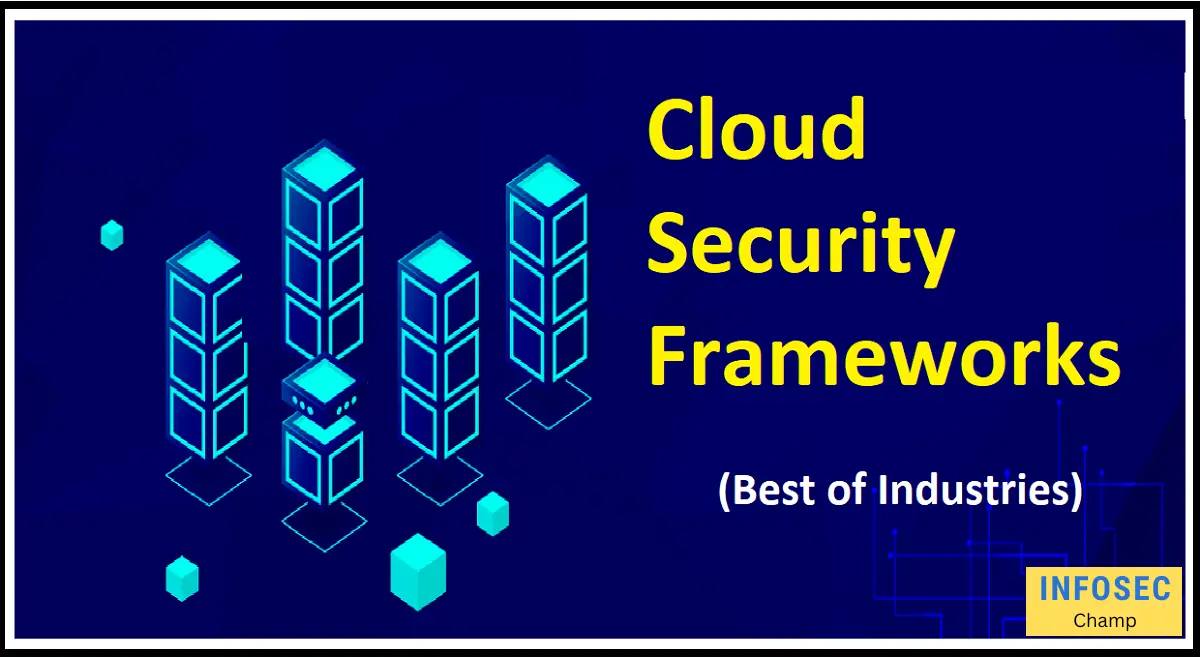
21 Best Cloud Security Frameworks
Cloud security has emerged as a critical issue as more firms shift their activities to the cloud. Adopting strong cloud security frameworks is crucial for ensuring the security of sensitive data kept on cloud servers. The top 21 cloud security frameworks are listed below for your firm to consider:
- AWS Cloud Security – Amazon Web Services offers an array of security tools for cloud security.
- Azure Security – Microsoft Azure provides security services, including identity and access management.
- Google Cloud Security – Google Cloud Platform has multiple security offerings, including key management, identity, and access management.
- Cloud Security Alliance (CSA) – CSA is a non-profit organization that provides guidance on best practices for cloud security.
- NIST Cloud Computing Security – NIST provides guidelines for cloud computing security, including risk management and compliance.
- ISO/IEC 27017:2015 – ISO/IEC 27017 is a cloud security standard that provides guidance on information security controls for cloud services.
- CIS Controls – The Center for Internet Security provides a set of security controls for cloud security.
- FedRAMP – The Federal Risk and Authorization Management Program provides a standardized approach to cloud security assessment, authorization, and continuous monitoring.
- Cloud Access Security Brokers (CASB) – CASBs provide visibility and control over cloud services accessed by employees.
- Open Web Application Security Project (OWASP) – OWASP provides a list of best practices for securing web applications, including cloud-based applications.
- VMware Cloud Security – VMware provides a comprehensive set of security tools for securing cloud environments.
- Palo Alto Networks Prisma Cloud – Prisma Cloud offers cloud security for public, private, and hybrid cloud environments.
- IBM Cloud Security – IBM Cloud provides security tools for protecting data and applications in the cloud.
- Check Point CloudGuard – Check Point’s CloudGuard provides security for public, private, and hybrid cloud environments.
- McAfee MVISION Cloud – MVISION Cloud offers cloud security for SaaS, PaaS, and IaaS environments.
- Fortinet Secure SD-WAN – Fortinet provides secure SD-WAN solutions for cloud environments.
- CloudLinux – CloudLinux provides a security-focused operating system for cloud servers.
- Red Hat OpenShift – OpenShift is a Kubernetes-based container platform that provides security for containerized applications.
- HashiCorp Vault – Vault is a secrets management tool that provides security for cloud environments.
- Aqua Security – Aqua Security provides cloud-native security for containerized applications.
- Twistlock – Twistlock provides cloud-native security for containerized applications and serverless functions.
In conclusion, selecting the appropriate cloud security architecture for your business might be challenging. But, using the frameworks listed above, you can find a solution that meets your company’s requirements. It’s important to keep in mind that cloud security is a constant process, and you should regularly review and enhance your cloud security plan to keep up with changing threats.
FAQ:
What are cloud security frameworks?
Organizations can utilize cloud security frameworks to safeguard their cloud-based apps, systems, and data by adhering to a set of standards, guidelines, and best practices. These frameworks assist businesses in protecting sensitive information, identifying and mitigating potential security risks, and adhering to legal and regulatory obligations.
What are some examples of cloud security frameworks?
The Cloud Security Alliance’s (CSA) Security, Trust & Assurance Registry (STAR), the National Institute of Standards and Technology’s (NIST) Cybersecurity Framework, and the Center for Internet Security’s (CIS) Key Security Controls are a few examples of cloud security frameworks.
What are the best practices for implementing cloud security frameworks to ensure data protection?
By employing best practices like conducting a risk assessment, implementing strict access controls, encrypting data, routinely monitoring and auditing cloud-based systems, and maintaining compliance with pertinent regulations, organizations can ensure data protection when deploying cloud security frameworks.
How can organizations establish a security baseline for cloud security frameworks to ensure regulatory compliance?
Organizations can identify regulatory requirements, analyze risks, choose a security framework, design policies, and processes, put security controls in place, and conduct routine audits to ensure regulatory compliance and create a security baseline for cloud security frameworks.
What are the most important security controls to prioritize when implementing cloud security frameworks?
Data protection, access controls, network security, compliance, and disaster recovery should be given priority while establishing cloud security frameworks. While continuing to expand and scale their operations, these steps assist firms in protecting their data, reducing the risk of unauthorized access and data breaches, and adhering to regulations.
